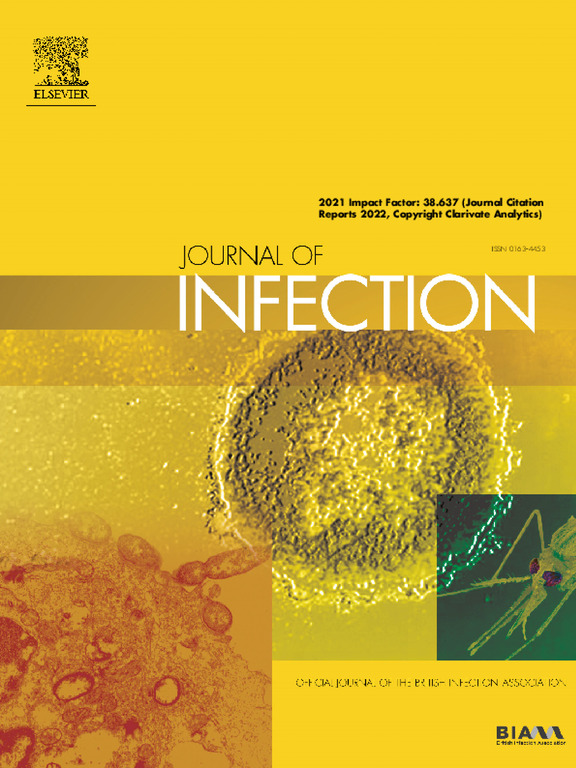Revealing patterns of SARS-CoV-2 variant emergence and evolution using RBD amplicon sequencing of wastewater
IF 14.3
1区 医学
Q1 INFECTIOUS DISEASES
引用次数: 0
Abstract
Objectives
Rapid evolution of SARS-CoV-2 has resulted in the emergence of numerous variants, posing significant challenges to public health surveillance. Clinical genome sequencing, while valuable, has limitations in capturing the full epidemiological dynamics of circulating variants in the general population. This study aimed to monitor the SARS-CoV-2 variant community dynamics and evolution using receptor-binding domain (RBD) amplicon sequencing of wastewater samples.
Methods
We sequenced wastewater from El Paso, Texas, over 17 months, compared the sequencing data with clinical genome data, and performed biodiversity analysis to reveal SARS-CoV-2 variant dynamics and evolution.
Results
We identified 91 variants and observed waves of dominant variants transitioning from BA.2 to BA.2.12.1, BA.4&5, BQ.1, and XBB.1.5. Comparison with clinical genome sequencing data revealed earlier detection of variants and identification of unreported outbreaks. Our results also showed strong consistency with clinical data for dominant variants at the local, state, and national levels. Alpha diversity analyses revealed significant seasonal variations, with the highest diversity observed in winter. By segmenting the outbreak into lag, growth, stationary, and decline phases, we found higher variant diversity during the lag phase, likely due to lower inter-variant competition preceding outbreak growth.
Conclusions
Our findings underscore the importance of low transmission periods in facilitating rapid mutation and variant evolution. Our approach, integrating RBD amplicon sequencing with wastewater surveillance, demonstrates effectiveness in tracking viral evolution and understanding variant emergence, thus enhancing public health preparedness.
利用废水中的 RBD 扩增片段测序揭示 SARS-CoV-2 变异出现和进化的模式。
目的:SARS-CoV-2 的快速演变导致出现了许多变种,给公共卫生监测工作带来了巨大挑战。临床基因组测序虽然很有价值,但在捕捉普通人群中循环变异体的全部流行病学动态方面存在局限性。本研究旨在通过对废水样本进行受体结合域(RBD)扩增子测序,监测SARS-CoV-2变异体群落的动态和演变:我们对得克萨斯州埃尔帕索的废水进行了长达17个月的测序,将测序数据与临床基因组数据进行了比较,并进行了生物多样性分析,以揭示SARS-CoV-2变体的动态和演化:我们发现了 91 个变体,并观察到从 BA.2 到 BA.2.12.1、BA.4&5、BQ.1 和 XBB.1.5 的显性变体波。与临床基因组测序数据进行比较后发现,变异的检测时间更早,并发现了未报告的爆发。我们的结果还显示,在地方、州和国家层面,显性变异与临床数据非常一致。阿尔法多样性分析显示了显著的季节性变化,冬季的多样性最高。通过将疫情分为滞后期、增长期、静止期和衰退期,我们发现滞后期的变异体多样性较高,这可能是由于疫情增长前变异体之间的竞争较低:我们的发现强调了低传播期在促进快速突变和变异进化方面的重要性。我们的方法将 RBD 扩增片段测序与废水监测相结合,在跟踪病毒进化和了解变异体出现方面显示出了有效性,从而提高了公共卫生防备能力。
本文章由计算机程序翻译,如有差异,请以英文原文为准。
求助全文
约1分钟内获得全文
求助全文
来源期刊

Journal of Infection
医学-传染病学
CiteScore
45.90
自引率
3.20%
发文量
475
审稿时长
16 days
期刊介绍:
The Journal of Infection publishes original papers on all aspects of infection - clinical, microbiological and epidemiological. The Journal seeks to bring together knowledge from all specialties involved in infection research and clinical practice, and present the best work in the ever-changing field of infection.
Each issue brings you Editorials that describe current or controversial topics of interest, high quality Reviews to keep you in touch with the latest developments in specific fields of interest, an Epidemiology section reporting studies in the hospital and the general community, and a lively correspondence section.
 求助内容:
求助内容: 应助结果提醒方式:
应助结果提醒方式:


